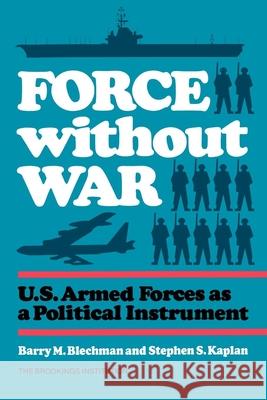Force Without War » książka
Force Without War
ISBN-13: 9780815709855 / Angielski / Miękka / 1978 / 584 str.
The United States has used military force short of war as an instrument of diplomacy on many occasions and in many areas of the world in the years since the Second World War. This book describes and analyzes the circumstances accompanying 215 shows of force and examines how effective these actions were in helping to attain U.S. foreign policy objectives. Which type of force (air, ground, naval) was most often used? What did the forces do and how effective were they? Of what significance was Soviet involvement when U.S. military power was called upon to influence events? Was the threat presented by the alerting or deployment of strategic nuclear forces or by very large conventional forces especially telling? How clear is it that a desired effect was in fact caused by the demonstration of force? Barry Blechman and Stephen Kaplan explore these and other questions, examining also such elements as a President's domestic popularity and personal diplomacy preceding or during crises that led to U.S. military demonstrations. Complementing their analysis are five sets of case studies describing ten instances of the use of American military power to influence events in Central and Eastern Europe, the Middle East, South and Southeast Asia, and the Caribbean. The case studiesby David K. Hall, William B. Quandt, Jerome N. Slater, Robert M. Slusser, and Philip Windsorfocus on the reasons for U.S. action and the methods adopted, on the behavior of other parties, and on the relation between the use of force and the resolution of the crisis. The book's main conclusion is that the demonstrative use of U.S. armed forces has often stabilized a deteriorating situation enough to avoid further deterioration, relieved domestic and international pressure for more drastic and possibly self-defeating action, and gained time for diplomacy to achieve a more lasting remedy."











